Found these today in a gorge that has a small stream running though it (partially frozen) in SE WI. I think I have a handle on what they are except the last one.
Sandstone with fair sized pyrite (black streak) growing on it. Please correct me if i'm wrong.
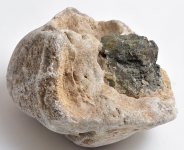
This one is really quite interesting and strange..Its almost completely covered in druzy quartz. Not quite sure what under the quartz crystals but could be lime stone or some other rock...The dark section in photo3 is unusual and in photo 4 the LW uv shot shows some interesting fluorescence.
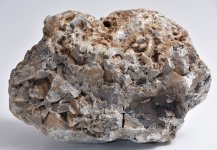
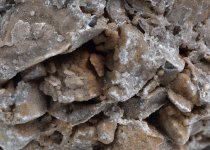
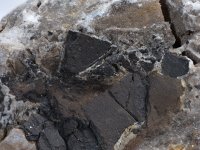
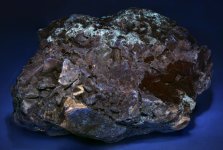
I need some help on this one.. any ideas? it does attract a magnet.
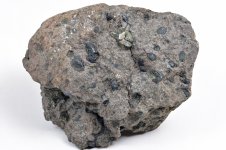
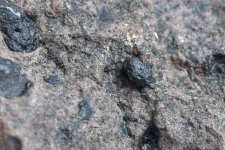
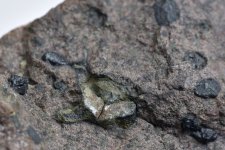
Thx
Sandstone with fair sized pyrite (black streak) growing on it. Please correct me if i'm wrong.

This one is really quite interesting and strange..Its almost completely covered in druzy quartz. Not quite sure what under the quartz crystals but could be lime stone or some other rock...The dark section in photo3 is unusual and in photo 4 the LW uv shot shows some interesting fluorescence.




I need some help on this one.. any ideas? it does attract a magnet.



Thx
Last edited:


 thanks for the streak test.
thanks for the streak test.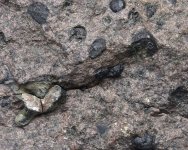
 looks like a non-foliated schist for the most part or like before, an intrusive igneous that has significantly metamorphosed. The blacks are garnets, I suppose it's possible they're amphiboles of some sort but I doubt it. That's my opinion and I'm sticking to it haha
looks like a non-foliated schist for the most part or like before, an intrusive igneous that has significantly metamorphosed. The blacks are garnets, I suppose it's possible they're amphiboles of some sort but I doubt it. That's my opinion and I'm sticking to it haha

